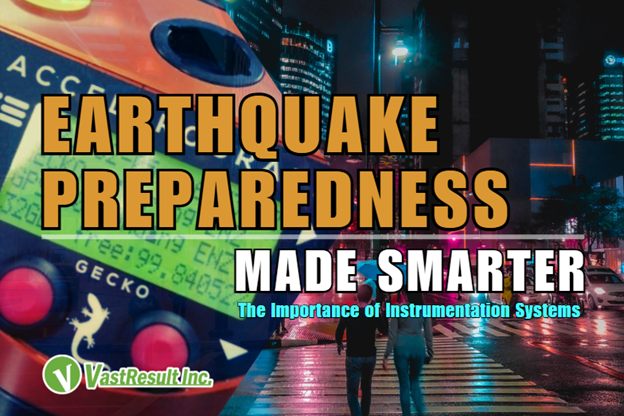
Earthquakes are unpredictable, fast, and potentially devastating. For countries like the Philippines, which sits on the Pacific Ring of Fire, this natural hazard is a constant threat. But while we can’t stop earthquakes from happening, we can prepare smarter, and at the heart of that smart preparedness are earthquake instrumentation systems.
These systems turn raw seismic activity into real-time data, giving engineers, building owners, and disaster response teams the ability to make timely and informed decisions. When every second counts, having accurate data can mean the difference between safety and catastrophe.
What Are Earthquake Instrumentation Systems?
Earthquake instrumentation systems refer to the technologies used to monitor, detect, and record seismic activity. These include:
Accelerographs
– Devices that measure how a structure shakes during an earthquake.
Seismometers
– Instruments that detect ground motion from seismic waves.
Data loggers and sensors
– Components that collect and store seismic information.
Remote monitoring tools
– Software that provides access to real-time seismic data.
Together, these tools create a network of eyes and ears that track the earth’s movements and help prepare for their consequences.
Why Instrumentation Is Crucial for Earthquake Preparedness
✅ 1. Provides Real-Time Data for Faster Response
Instrumentation systems instantly detect ground motion and structural vibrations. This allows:
Early detection of earthquakes
Faster evacuation alerts
Quicker emergency response coordination
When responders have real-time insights, they can act faster and more accurately.
✅ 2. Ensures Structural Safety Assessments
After a quake, buildings may look fine on the outside but have internal structural damage. Accelerographs and vibration sensors help engineers:
Analyze how the building performed during shaking
Identify weak spots or potential failures
Make evidence-based decisions on evacuation or repairs
✅ 3. Supports Compliance with Government Safety Standards
In the Philippines, agencies like PHIVOLCS and the BFP recommend or require earthquake monitoring systems in certain types of buildings, including:
High-rise buildings
Hospitals and schools
Commercial and government facilities
Having these systems helps organizations stay compliant, reducing liability and enhancing public safety.
✅ 4. Improves Building Design and Engineering
Instrumentation data doesn’t just help during or after an earthquake, it improves future construction. Engineers use this data to:
Develop better structural designs
Set realistic safety benchmarks
Create cost-effective reinforcement strategies
The more data we gather, the smarter our buildings become.
✅ 5. Builds Public Trust and Preparedness Culture
When people know that buildings are equipped with seismic monitoring systems, it builds confidence. It tells tenants, clients, and the public that safety is a top priority. It also encourages a proactive mindset about earthquake preparedness in the community.
Smart Earthquake Preparedness in Action
Imagine this: an earthquake strikes Metro Manila. Buildings equipped with instrumentation systems immediately record the ground acceleration and structural movement. The data is sent in real time to engineers and safety officers.
Within minutes:
Building safety is evaluated
Tenants are informed whether evacuation is necessary
First responders are directed to the hardest-hit areas
No guesswork. Just fast, data-driven action.
This is smart earthquake preparedness—where technology and safety go hand in hand.
Final Thoughts
As earthquakes become more frequent and urban populations continue to grow, smart preparedness is no longer optional, it’s a necessity. Instrumentation systems offer a reliable and proactive way to monitor, respond, and recover from seismic events.
Whether you’re managing a commercial building, operating a school, or leading a local government unit, investing in earthquake instrumentation is an investment in safety, resilience, and peace of mind.
Ready to make your building smarter and safer?
VastResult provides professional installation and maintenance of seismic instrumentation systems like accelerographs, helping you stay BFP-compliant and prepared for any seismic event.
Contact VastResult today at (02) 8404 0740 or email us at support@vastresult.com.
